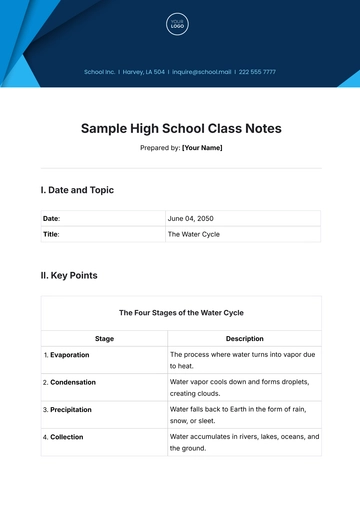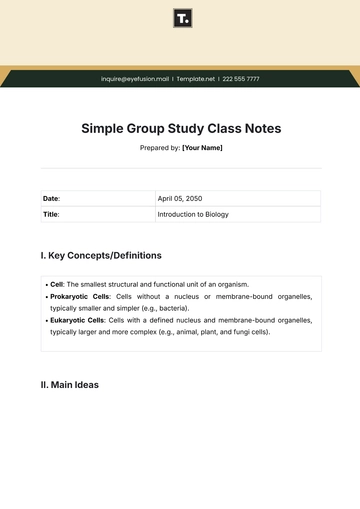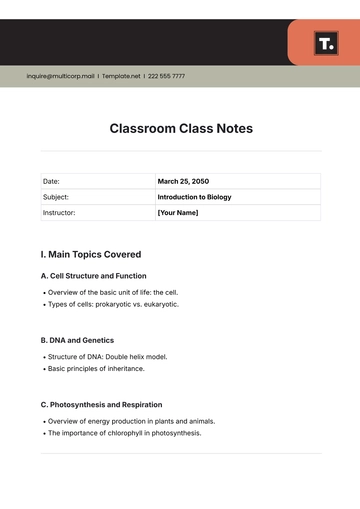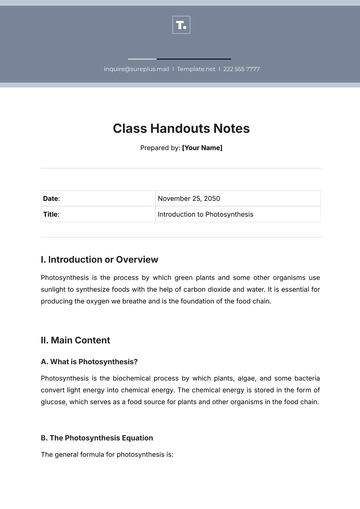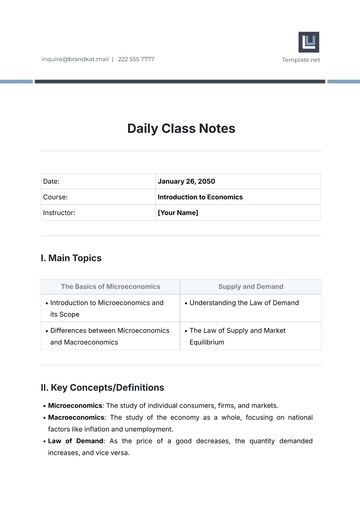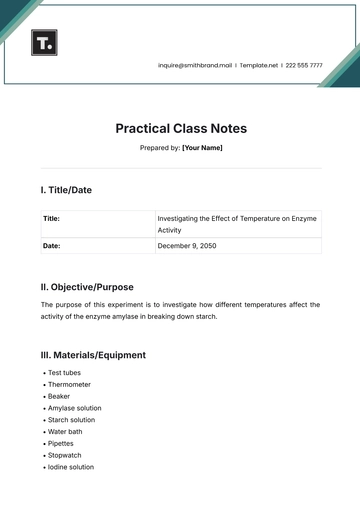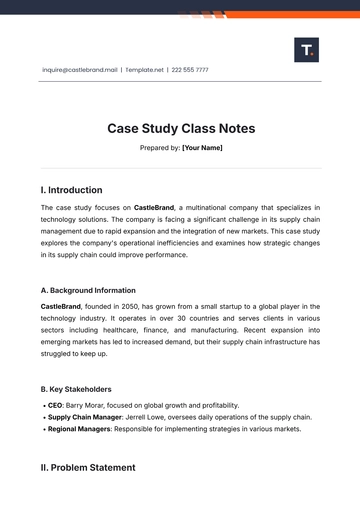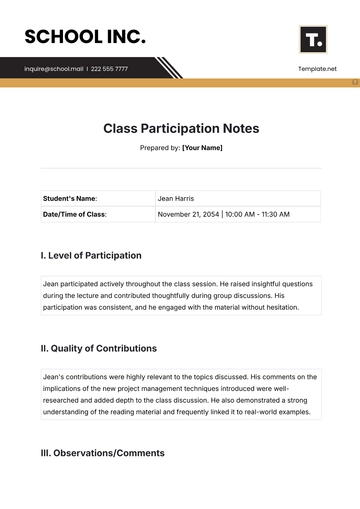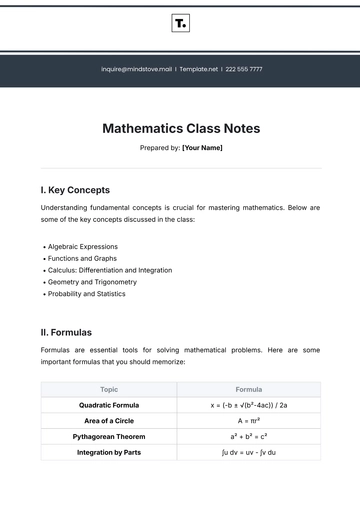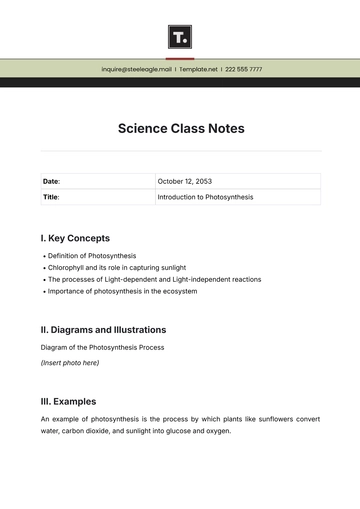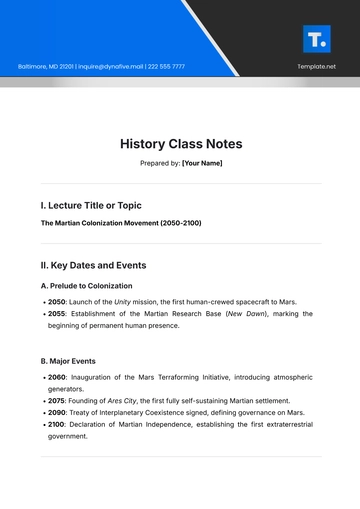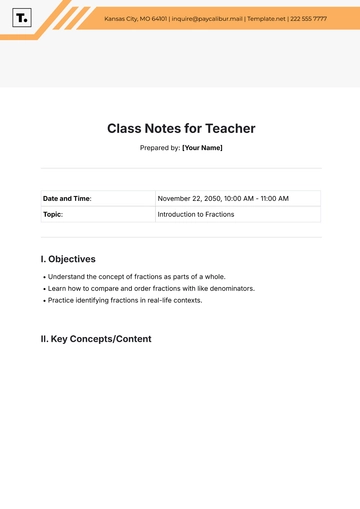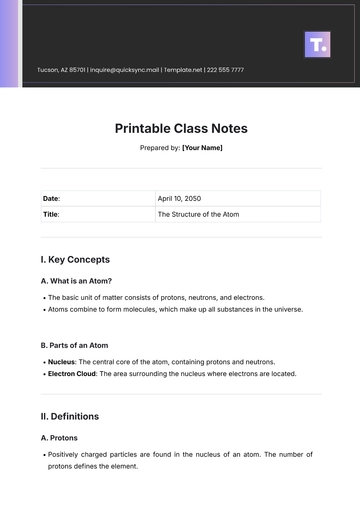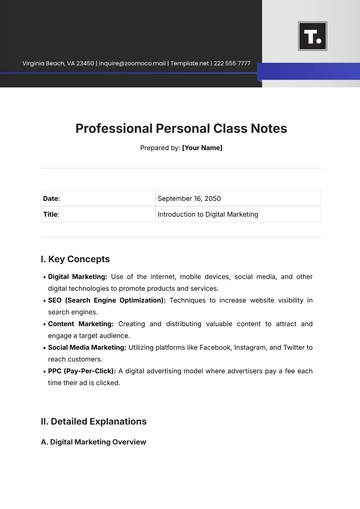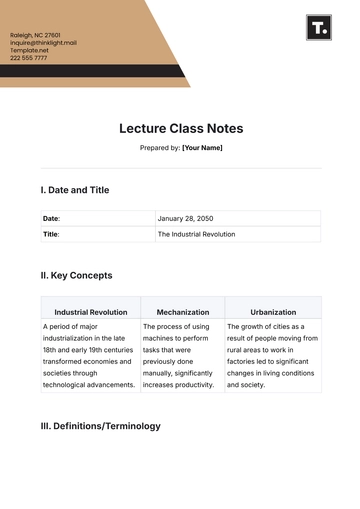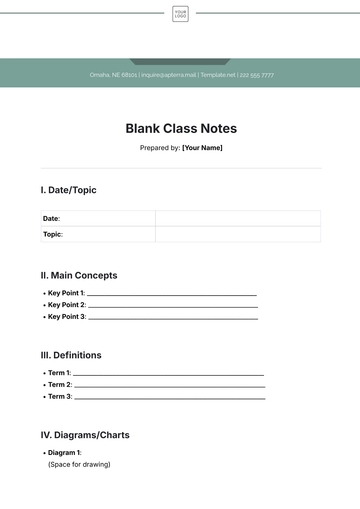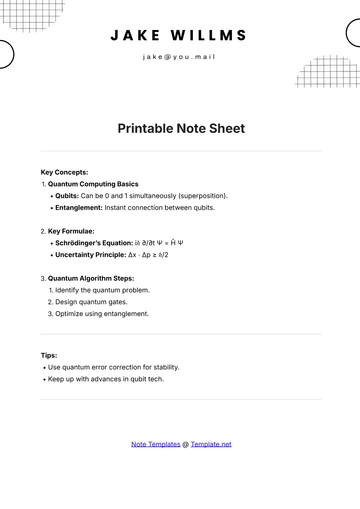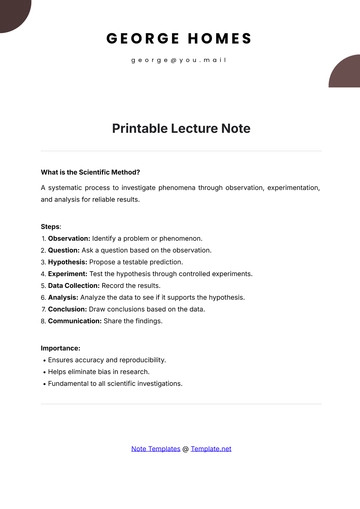Classroom Class Notes
Date: | March 25, 2050 |
Subject: | Introduction to Biology |
Instructor: | [Your Name] |
I. Main Topics Covered
A. Cell Structure and Function
B. DNA and Genetics
C. Photosynthesis and Respiration
II. Detailed Notes
A. Cell Structure and Function
Prokaryotic Cells: Simple structure, no nucleus, examples include bacteria.
Eukaryotic Cells: Complex structure, contains a nucleus, found in animals, plants, fungi, and protists.
Organelles:
Nucleus: Control center of the cell, contains DNA.
Mitochondria: Powerhouse of the cell, generates energy.
Ribosomes: Protein synthesis occurs here.
B. DNA and Genetics
DNA Structure:
Made up of nucleotides (adenine, thymine, cytosine, guanine).
The double helix model was proposed by Watson and Crick.
Genetic Inheritance:
C. Photosynthesis and Respiration
Photosynthesis:
Respiration:
III. Examples
Example 1: Prokaryotic vs. Eukaryotic Cells
Example 2: Punnett Square
IV. Conclusion or Summary
Cells are the basic unit of life, and understanding their structure and function is crucial.
Genetics explains inheritance patterns through dominant and recessive traits.
Photosynthesis and respiration are essential biological processes for energy production in living organisms.
V. Questions or Additional Notes
Note Templates @ Template.net


